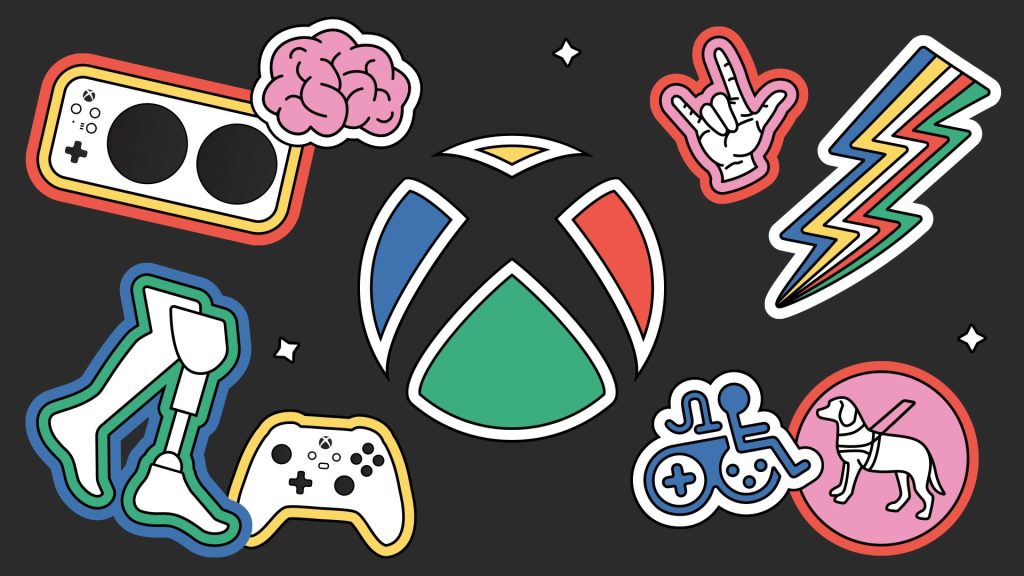In a significant move towards inclusivity in gaming, Xbox has launched the Accessible Games Initiative tags, providing an essential resource for players with disabilities. This initiative comes just in time for Disability Pride Month, showcasing Xbox’s commitment to creating an inclusive gaming environment. The tags aim to deliver clear, consistent information about the accessibility features available in video games across all digital Xbox platforms, including console, PC, mobile, and their web storefronts.
The Vision Behind the Initiative
The Accessible Games Initiative is a collaboration between Xbox and various leading gaming companies, including the Entertainment Software Association (ESA), Electronic Arts, Google, Nintendo of America, and Ubisoft. The goal is straightforward yet impactful: to make it easier for the over 429 million players with disabilities to identify games that suit their needs before they make a purchase. By standardizing accessibility tags, the initiative seeks to enhance the gaming experience for players who rely on these features.
This step continues the work begun by Xbox in 2021 when they first introduced Xbox Game Accessibility Feature tags. Xbox has assured players that any tags without equivalent Accessible Games Initiative tags will remain on their platform, providing a comprehensive resource for gamers seeking accessible experiences.
Understanding the New Tagging System
Brannon Zahand, Senior Technical Program Manager at Xbox, emphasized the significance of this initiative, stating, “This work has been over half a decade in the making, so finally seeing these new tags in our store experiences is incredibly exciting.” The rollout includes over 4,000 tags across various platforms, providing a vast resource for players to navigate their options more effectively. Players can find these tags in several places, including the Xbox Store, the “My Games & Apps” section, and the Xbox Mobile and PC apps.
For developers, Zahand explained that the introduction of these new tags is not about replacing existing systems. “We really view accessibility through the lens of collaboration, not competition,” he noted. This approach minimizes the burden on developers while helping the gaming community by standardizing the terminology and expectations surrounding accessibility features.
Community Reactions and Expectations
Accessibility advocate Steve Saylor expressed enthusiasm about the new tags, stating, “As more and more accessible games are being released, being able to find them via tags that cater to my accessibility needs is fantastic.” This sentiment reflects the broader hope within the gaming community that the new tagging system will transform how accessibility is addressed in game design and marketing.
In the past, players often faced uncertainties regarding a game’s accessibility features until after purchase. Saylor noted, “Right now, accessibility information about a game is rare. We get some info here and there, but we often won’t know if a game is accessible until we buy it and play it ourselves.” The new tags aim to change this narrative, enabling informed buying decisions that enhance player satisfaction and inclusivity.
The Impact of Standardization on Game Development
Both Zahand and Saylor emphasized the advantages that standardization brings not only to players but also to developers. Zahand pointed out historical shortcomings in accessibility claims, providing an example of a game that failed to offer readable subtitles against a snowy backdrop. In contrast, today’s tags ensure that features like “Large & Clear Subtitles” come with specifications that players can trust.
Saylor added, “It’s a signal to the industry that accessibility is not a daunting thing. Yes, it can be a lot of work. But instead of being a mysterious thing, developers can look at the tags and say, ‘Oh, that’s how you do it? That can totally be done.’” This clarity is crucial for fostering an inclusive gaming ecosystem where both developers and players feel empowered.
Looking Forward: What’s Next for Accessibility in Gaming?
As the gaming industry moves forward, both advocates hope that the Accessible Games Initiative sets a precedent for future developments. Zahand wishes to see a shift where accessibility features are integrated into the core of game development rather than being an afterthought. Meanwhile, Saylor hopes that the industry recognizes accessibility as a valuable aspect of game design and consumer engagement.
Developers interested in embracing this initiative can visit the Accessible Games Initiative website or check out Xbox’s developer documentation to learn more about integrating these tags into their games. With the gaming community’s collective efforts, the hope is that accessibility will become as standardized as gameplay mechanics and graphics quality.
For more information on the new Accessible Games Initiative tags and how they can enhance your gaming experience, you can visit www.accessiblegames.com.

